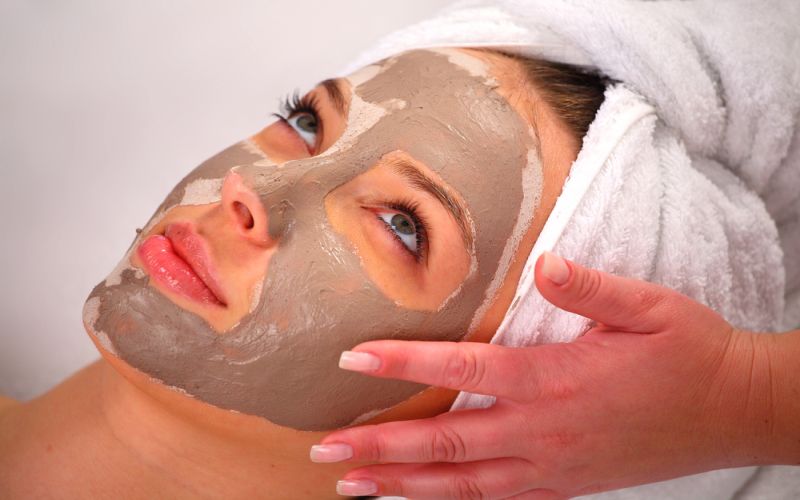While acne is often associated with oily skin, don’t be surprised if your dry skin starts breaking out.

The battle against dry acne-prone skin is as much common as oily skin. In fact, you’d be amazed by the number of people who would step forward as dry skin and acne sufferers.
Many women, while caring for dry acne-prone skin tend to go overboard with treatments, which result in worse breakouts or infections.
That said, if you have a dry skin and struggling with acne, you need a unique and gentle skin care regimen that can nourish your skin and reduce breakouts.
Because it’s difficult to find the right product that addresses your skin concern, here are skin care tips for acne and dry skin that you can follow to achieve a smooth, clear and healthy skin.
Moisturize Regularly

When you think of treating oily acne prone skin, you automatically think of ways of reducing sebum production. And many people allege that moisturizing regularly leads to an increase in the production of sebum, which can cause breakouts.
Well, I beg to disagree – because the opposite is actually what causes breakouts.
Turning your back on a moisturizer leaves your skin scaly, dry and dull. And while it might seem counter-intuitive, your skin actually rebounds and produces excess sebum, which can cause more breakouts.
Instead, you need to moisturize, but only with the right product. But how do you know a moisturizer is suitable for your dry acne-prone skin?
Look for oil-free and non-pore clogging moisturizers that do not leave your face greasy and extremely shiny.
Oil-free and non-comedogenic moisturizers contain glycerin and humectants which suck excess oil from your skin without leaving it dry or dull. So, if your skin rebounds by producing more oils, your moisturizers do their job without causing harm to your skin.
Also, consider using liquids, gels, and serums instead of thicker creams and greasy ointments.
Apply Moisturizer in Layers

Aside from moisturizing regularly and with the right product, understanding how to use the moisturizer the right way can help you reap all the benefits.
Like many other skin care products, the secret of moisturizing lies in the application. What’s your technique? Do you moisturize when the skin is damp or dry? Do you use a serum before a moisturizer? Do you rub or pat the product on your skin?
Many dermatologist can give you several tips on how to care for your dry acne prone skin. But the general rules of thumb are: moisturize when your skin is damp, cleanse and tone before moisturizing, apply lightweight products before thick options, SPF should come a few minutes after moisturizing, oils come last.
Exceptions are allowed especially if you have a dry skin and acne. So, instead of applying face oils that can clog your pores, use face mists or good hydrating spritz that can help you maintain a soft visage. An example is Thayer’s Rose Petal Witch Hazel Toner which contains glycerin and rosewater – both provide great soothing effect.
Use the Essential Oils for Acne

Just like moisturizing, you need to oil your dry skin. In as much that is important, remember using random oils is discouraged since they clog your pores and leave your skin looking greasy, shiny and acne prone.
Preferably, look for essential oils that contain ingredients like tree oil, rosemary oil, lavender oil, and lemon oil.
These ingredients are said to possess antibacterial and anti-inflammatory properties. In point of fact, research carried into essential oils showed that they have antimicrobial properties therefore effectively fight acne causing bacteria.
Moreover, essential oils such as lavender oils have been proven to soothe and protect the skin from irritation and stress – which can cause more breakouts or exacerbate acne.
Double Masking

Masking is one of the most powerful treatments for acne. Double masking involves using different masks designed to be used in tandem.
One can be purposely used to detoxify and extract impurities from the skin while the other can be formulated to hydrate and brighten the skin without leaving it greasy.
No matter which one you mask first, embracing double masking is important because most of the time, your skin needs more than one thing.
Since you’re battling dry acne prone skin, you can combine a soothing mask and hydrating mask to give your skin a fresh, cool and silky look. On the other hand, you can combine anti-aging masks with acne mask to tighten drooping skin and treat acne.
Rule of thumb: for subsequent masks to perform effectively, always begin double masking with an exfoliating option.
Use Honey or Honey-Based Products

Many dermatologists can’t talk about acne treatment without mentioning honey. It’s such an important home-based remedy that’s difficult to ignore, and its existence in this list shouldn’t be a surprise either.
While honey was used to treat wounds before the discovery of antibiotics, it’s been used as an inflammatory to reduce blemishes and swelling caused by acne.
As an antiseptic, honey cleans and clears pores while preventing the growth of acne causing bacteria on your skin. Furthermore, it contains low levels of hydrogen peroxide that cleanses your skin. It’s high sugar and acidic concentration also hampers the development of bacteria that causes acne
More importantly, for people with dry skin, honey is a natural humectant that reduces the loss of unwarranted moisture from the skin while strengthening and supporting your skin moisture defenses, therefore, giving it a smooth luminous look.
Final Thoughts
While genuine skin care products that can treat dry skin and acne are hard to find, you still need to improvise ways to subdue the condition.
If you’re not sure of the path to take, consult with a doctor who can give the best skin care tips for acne and dry skin.
Leave a Reply